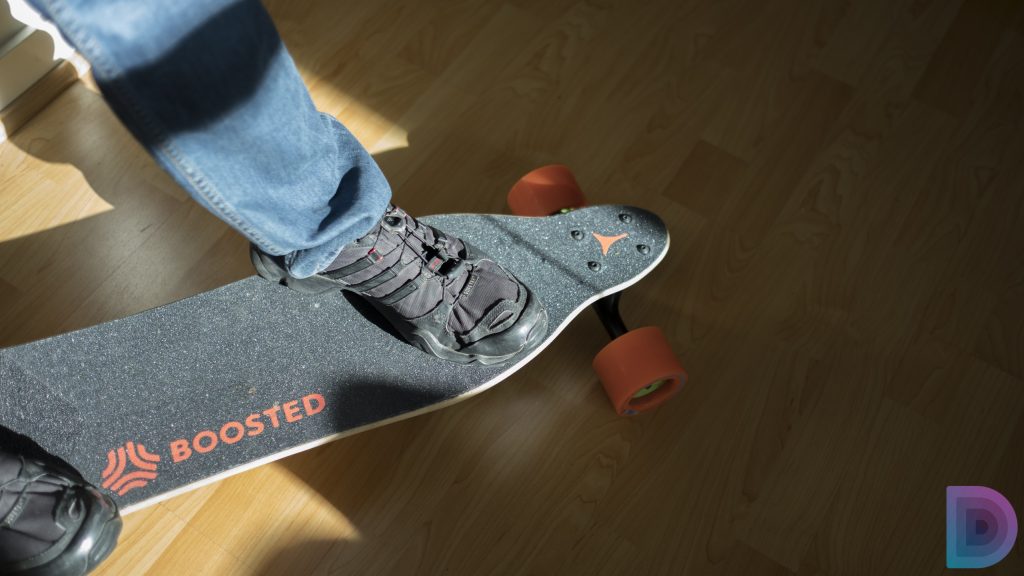
When you think about electric longboards, one or two companies probably come to mind. While there are dozens of companies out in the wild releasing their own variations of this new-age method of transportation, Boosted reigns supreme in terms of market visibility. And while other companies such as InBoard may come close in terms of portability and power, the level of viral marketing that Boosted has managed to produce makes it the most memorable option for many consumers.
Don’t miss: Boosted Boards is out of business, but you can still buy them. Read our guide
But is this reputation warranted? Now that we’ve taken a look at two different boards from two vastly different price ranges, we figured it was time to take a look at the industry standard in the space.
This is the Boosted Board 2.0 review.
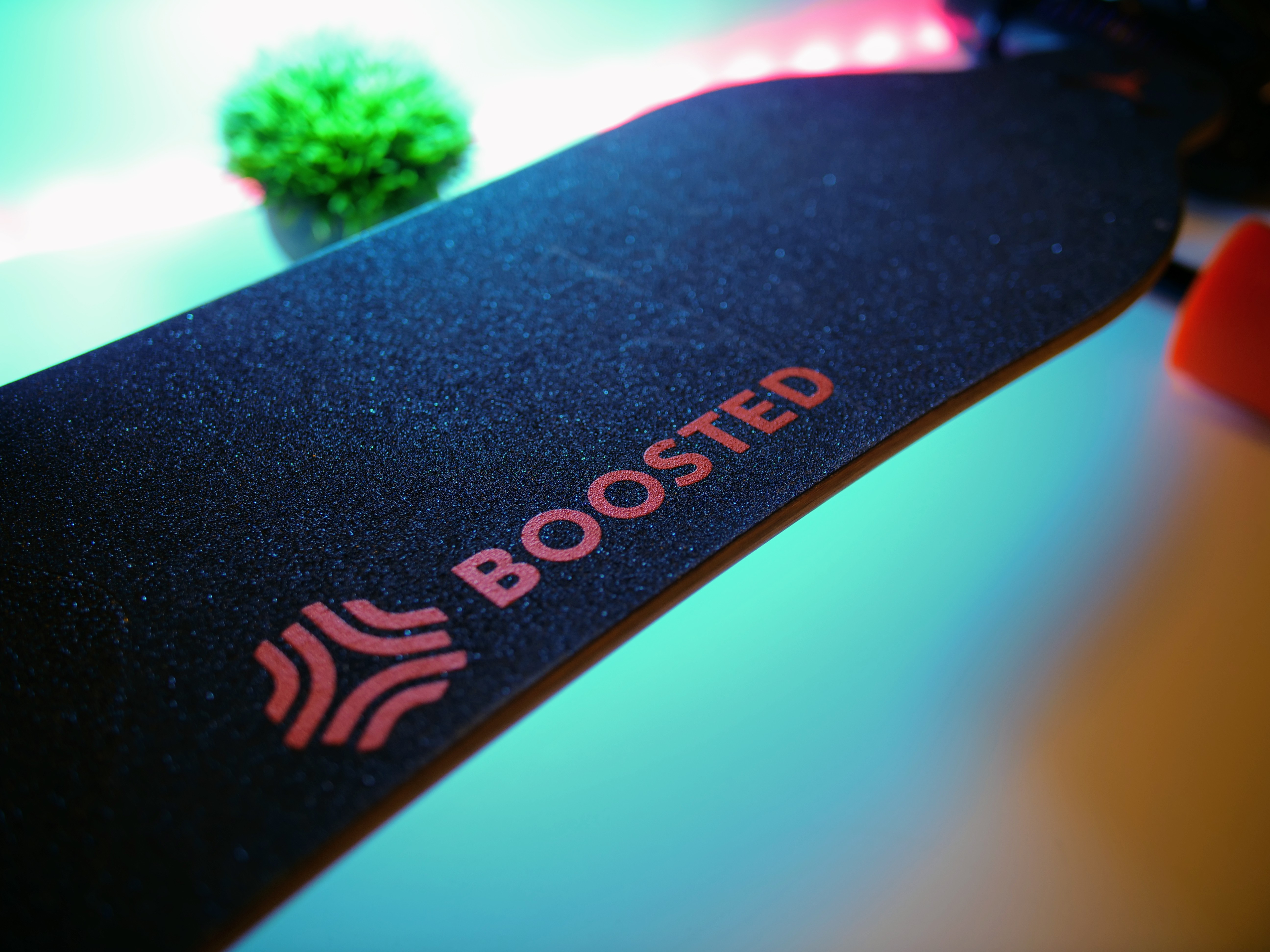
Table of Contents
Body
The deck of the Boosted Board 2.0 is a custom designed Vanguard deck made by Loaded Longboards. The bottom of the deck has a beautiful natural design and is made out of Bamboo to give the board a decent amount of flex while still maintaining the sturdiness required for a smooth ride. The Boosted Board 2.0 feels much more similar to a traditional longboard than the other options I’ve tried, and that is mostly due to the position of the batteries on this thing, remaining tucked behind the wheels and shallow enough to be out of sight most of the time.
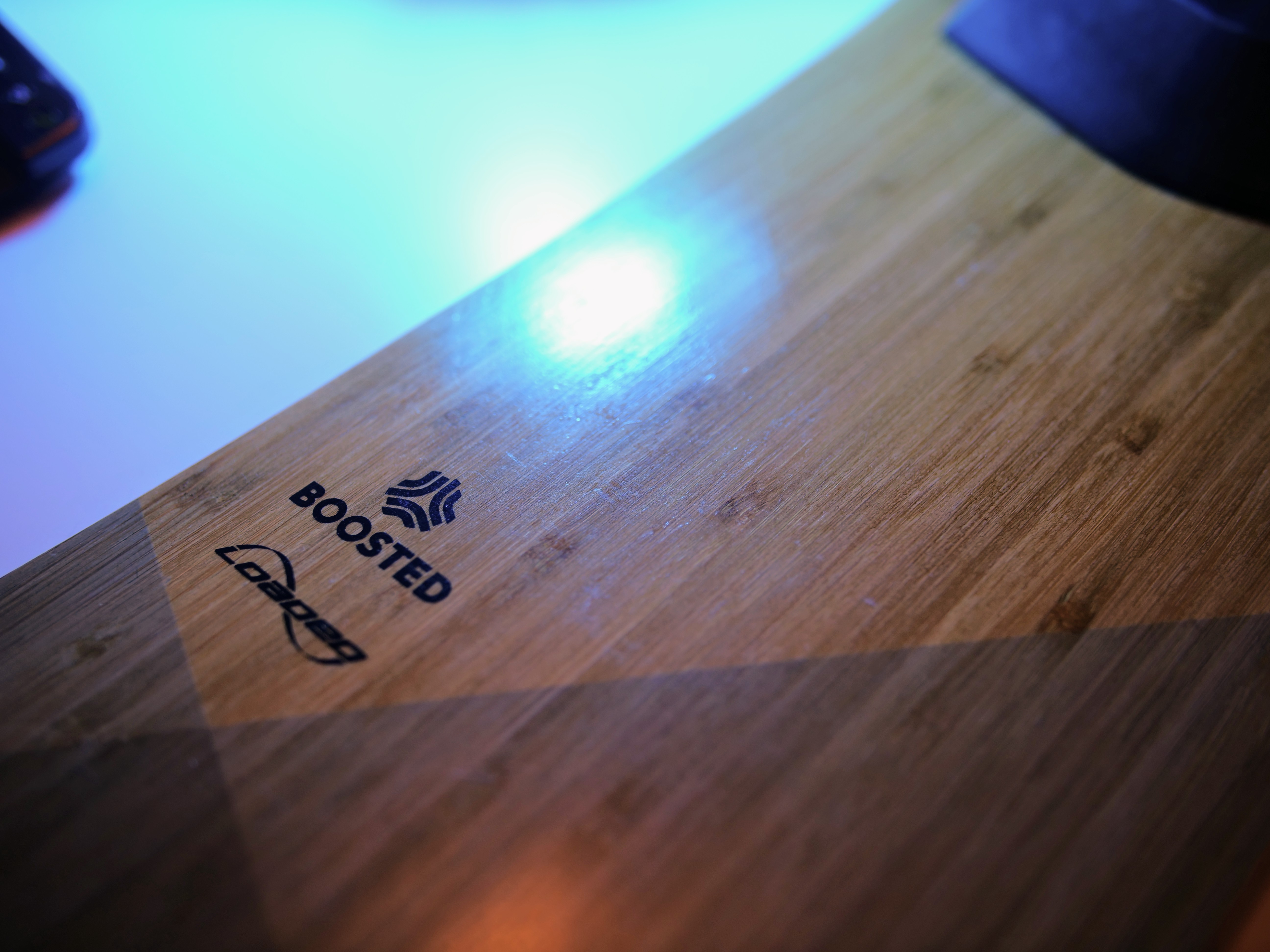
The grip tape across the top of the board surprised me on a number of different fronts. It held my shoes on very well without tearing them up, but was definitely very abrasive to my hands and clothes. Make sure you’re facing the grip tape away from you when carrying this thing, as it will likely rip up your shirt and pants if you don’t. I crashed on the board once and the grip tape did get a noticeable scratch in it, but that faded away within a couple of days, meaning that this board should continue looking great for quite a long time.
There isn’t really any sort of handle for you to carry this thing comfortably with, so I often ended up carrying it around on my shoulder when I couldn’t ride. Another option is to drag it behind you from the back, as the back wheels don’t like to move backwards when the unit is off. Transporting this thing while not riding it is one of its biggest flaws in my opinion, as there is no good way to carry it around with you while inside. We would have liked to see some easy way to tote this around, but hopefully that will come in the next installment.
The board is relatively symmetrical on both ends, with an orange arrow pointing in the forward-facing direction. The logo printing is subtle but stylish, matching the color of the arrow and the wheels that come on the board. You might be getting some questions asking what Boosted is, but it’s not nearly as bad as the huge logo plastered across the deck of the Swagtron Voyager.
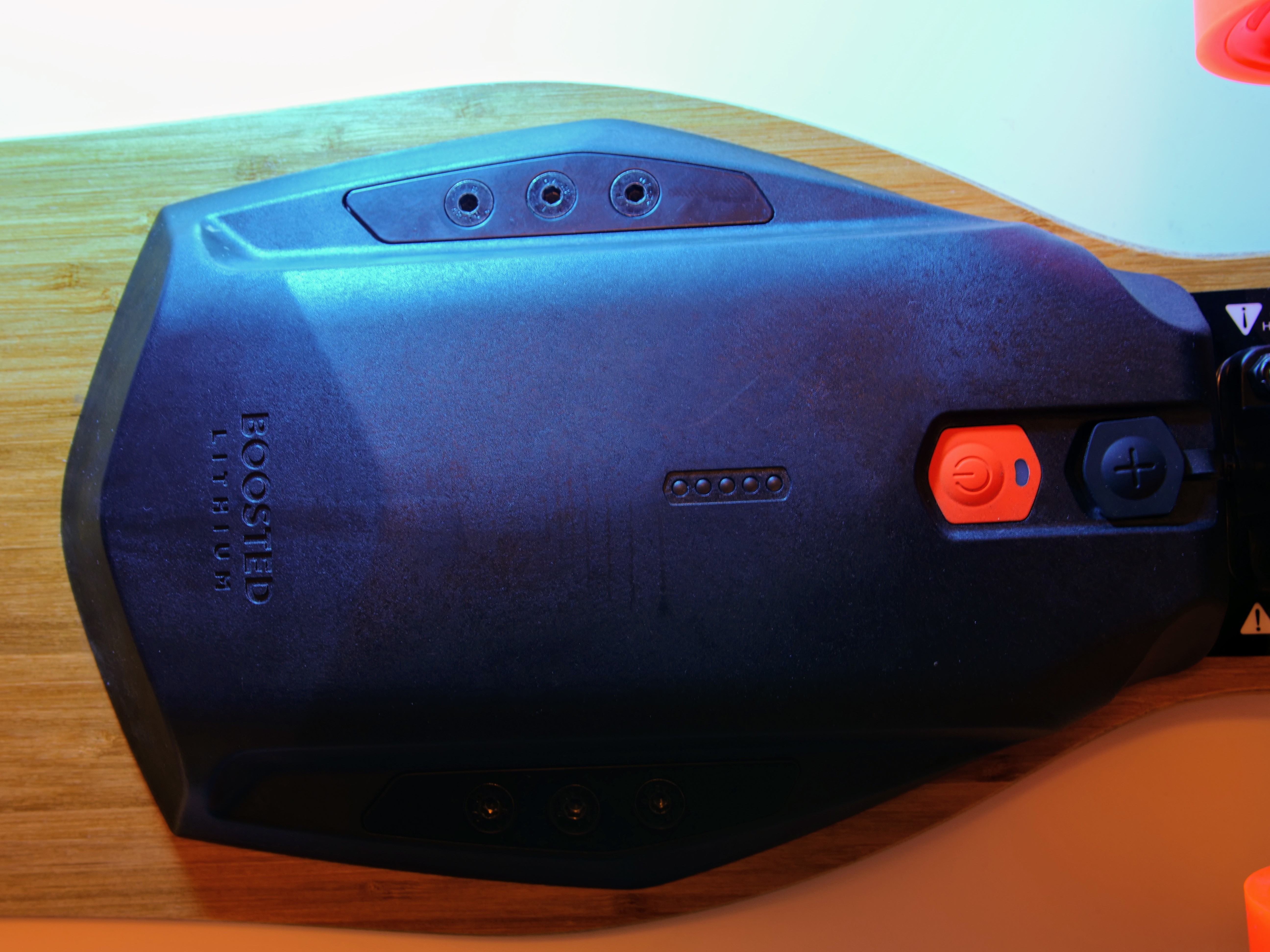
The power button is on the bottom of the board near the top battery, and has indicator lights to show you how much juice you have left at any given time. There is a nice smooth boot up animation when you turn the thing on, and while this technically doesn’t matter in terms of actual use, it’s small decisions like this that show just how much time and quality Boosted has put into their boards.
The wheels on the board are 80mm Orangatang Kegal, with an hourglass design that helps them flex when going over bumps and inconsistencies in the road. The wheel’s core is attached directly to the drivetrain, which gives the board a nice acceleration curve that can be slowed down just as easily as it is sped up. I never felt the need to replace these wheels, and even after a few weeks of consistent riding I didn’t notice any dents or nicks, so I have confidence that these will hold up for quite a long time.
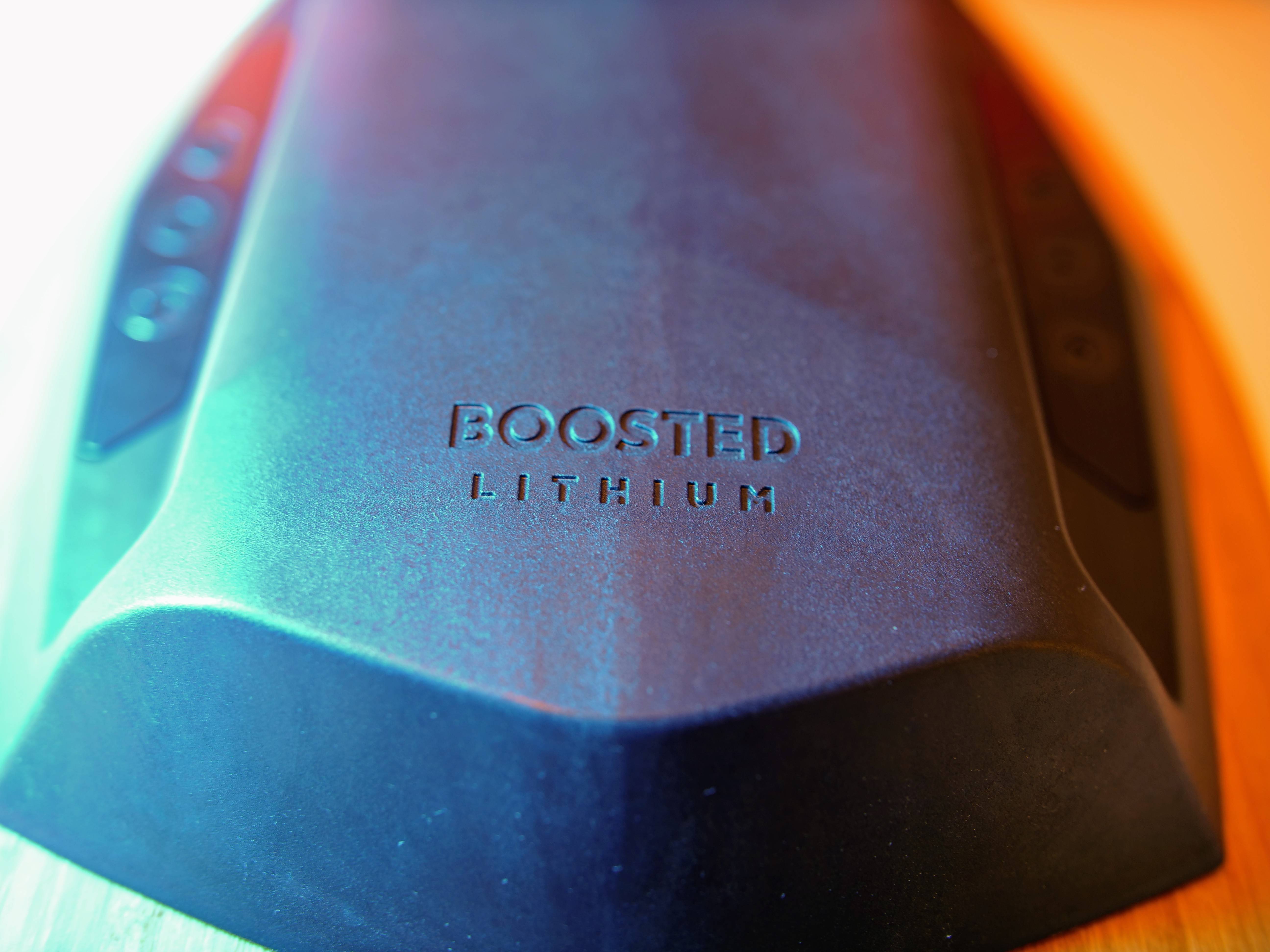
Batteries, Motors, and Riding Experience
The batteries on the Boosted Board 2.0 are very discrete, and are housed in 2 different power packs on each end of the deck. Boosted says to expect about a 6 mile range from the base model battery, and that was very accurate to what I experienced throughout my rides. I only had the board die on me once, and that was after using it pretty extensively over a 3 day period without plugging it in. If you want to carry extra batteries on you, you can do that. The packs are easily replaceable with just a few turns of the hex screws, so you can always have extra energy on you if you need it. If you want to get the extended battery though, you should get twice the range, so that might be a good idea if you don’t want to carry extra battery packs.
I’m really happy that Boosted placed these batteries where they did. The previous boards we have tested used one single battery mounted to the bottom of the board, and it created a less than optimal riding experience and less flex than I would like. Since the batteries are wholly separate and placed at each end, you get a lot more flex in the center of the board where you need it most. They are very discrete, being hidden well underneath the board, and should rarely scrape against pavement, though I did experience this once or twice on more bumpy rides. This board also features regenerative breaking technology, which means that the board will charge itself a bit when you slow down on your rides, and get you a bit more range while you’re at it.
The Boosted Board 2.0 uses a belt-driven system which the company says helps to magnify the torque of the motor by 3x, and makes it easier to perform more difficult tasks like climbing hills. Speaking of which, I was able to confidently ride up and down the massive hills of San Francisco on this thing, which is a great example of just how reliable the motor and brakes can be. The standard motor option is rated for a top speed of 20mph and is able to climb 20% grade hills, while the Dual+ motor allows for 22mph and 25% climbs.
As far as the riding experience goes, I absolutely love this thing. The acceleration curve present is the best of any electric skateboard I have tried so far, and it comes to a stop just as smoothly as it takes off. This really does feel like you’re riding a traditional longboard, and you can still use it as such if you would prefer to leave it turned off. Most people didn’t even realize I was riding an electric board, and the few people that tried it surprisingly did not get knocked off the back upon launch. I felt like I could ride pretty fast on this thing comfortably, and found myself riding in the regular car lanes through the streets of San Francisco. Keeping up with cars and bikes is pretty fun on this thing, and there were many bystanders who were pretty confused how I was going so fast.

Controller
The controller on this thing is absolutely amazing. You consistently hold down the trigger with your pointer finger to have the motor active, then use the thumb wheel at the top to accelerate or decelerate. There is more friction pushing against your thumb as you roll the wheel in either direction, and it will snap back to its natural position if you let go of it. The controller has a button near the bottom which connects it to the board upon boot, and can be used to change the drive mode of the board as well.
The handling of the controller is very nice, and fits very naturally in your hands. There is a wrist lace attached to keep it in your palm, but I often chose to keep it unlaced, as I wouldn’t want to land on this with the full force of my body. That being said, I did fall with it once, and while it definitely suffered some scuffs and scratches, it was still working just fine. Though it is made of plastic, it is quite tough and feels like it can take quite a beating.
There are 4 different ride modes available for the user, which will alter the acceleration curve to match the particular speed and power you are going after. If you are a novice, you can start out with a lower acceleration, while the more advanced modes will get you going a lot quicker. I chose to start with the 2nd mode at first, but quickly graduated to advanced to get myself going a little quicker.
There are indicator lights on the remote that show the battery level, and you can charge it over Mini USB. I wish that the company had used USB-C or even Micro USB over the older, much more rare standard, but this works fine providing you don’t lose the included cable.
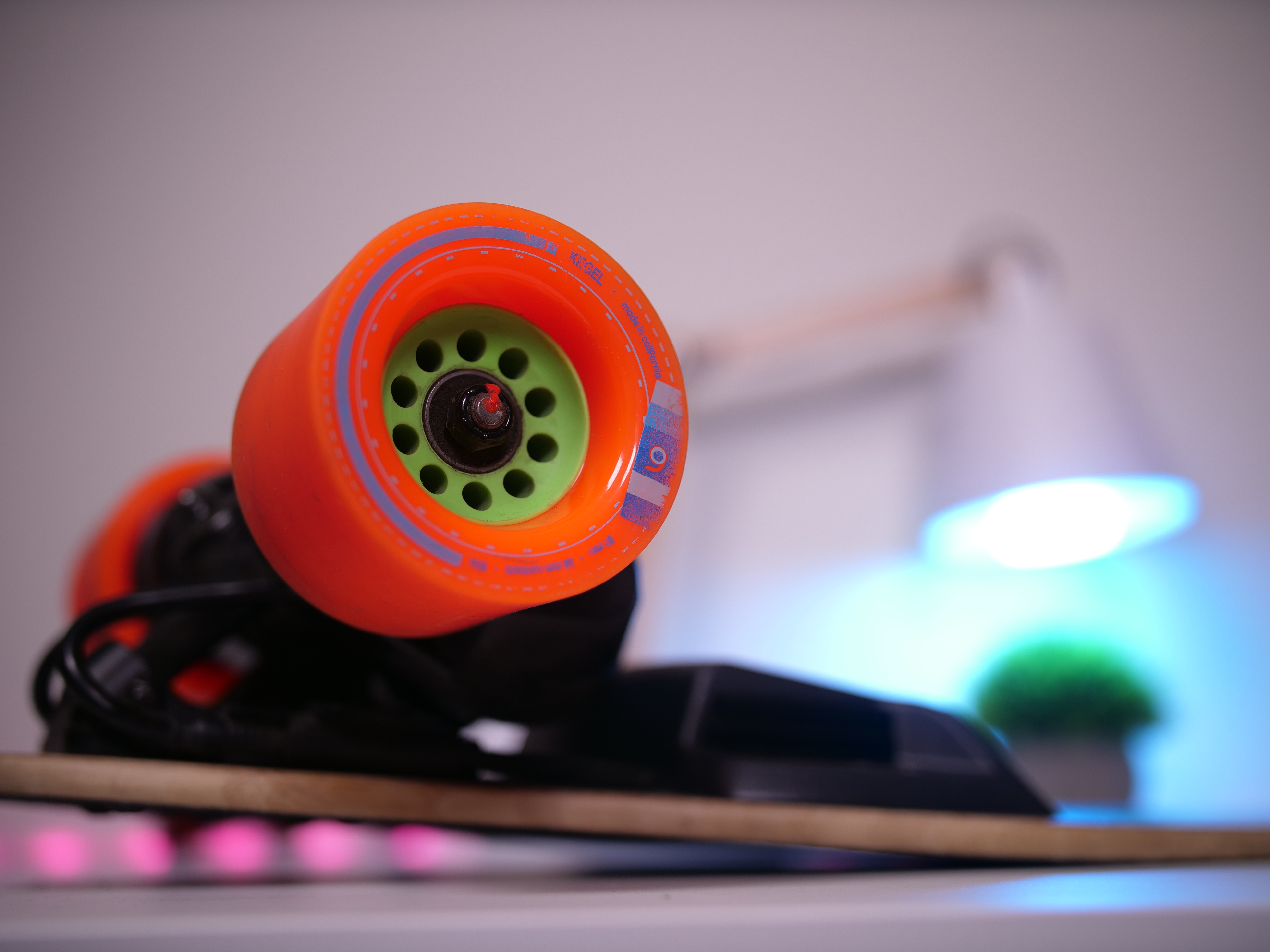
Wrap-Up
The Boosted Board 2.0 is not an inexpensive option, but it is one of the best. Coming in at $1,299 for the baseline model and $1,499 for the Dual + motor, you’re going to have to shell out a decent amount of cash if you want to get your hands on one. In addition, that extended range battery will cost you an additional $199 for pre-order and $399 after, so you may have to consider what factors are important to you when making a purchase decision.
Update: November 17, 2017
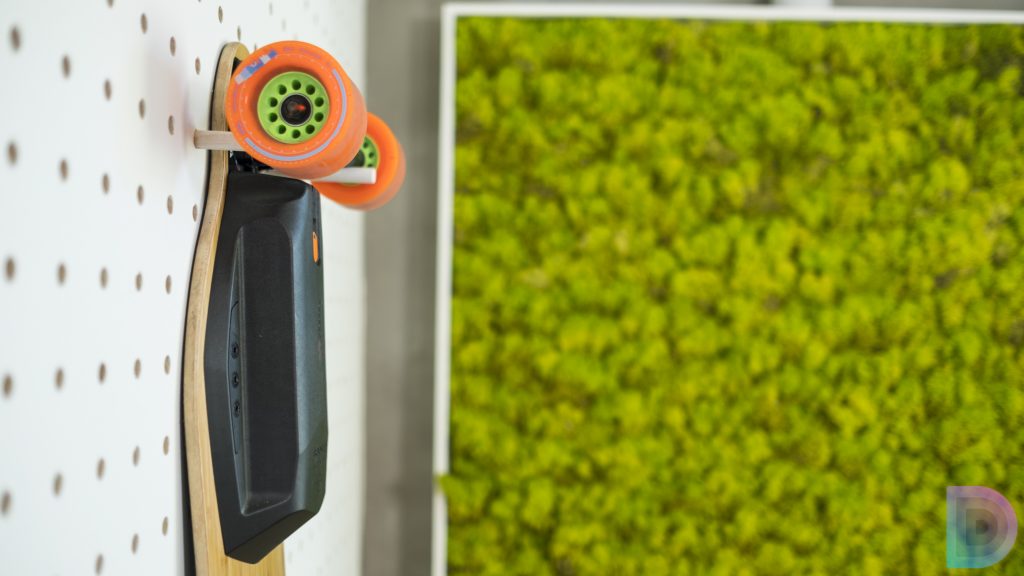
Boosted has just released their extended range battery, which has an estimated range of 12 miles. We received a board with the new battery to review, and were very impressed with the results.
Once I received the board, I charged it up to full, then used it to ride home and back to work for two days straight without feeling the need to charge. When I checked the battery at the end of the second day, it was only two thirds depleted. This falls in line with the suggested mileage of the board, since I live 2.3 miles from work.

I charged up the board again, then headed to San Jose, California where I carved the streets to my co-worker’s house. This wasn’t exceptionally far away, but it is enough of a distance that you absolutely would not want to walk. He usually bikes every day, but I was able to traverse the same terrain just fine in the same amount of time, keeping up with him and often overtaking him on our way there. If you know how to ride one of these boards, you can go at quite respectable speeds.
A new battery like this obviously requires a bigger footprint. The new extended range battery is noticeably thicker than the standard battery, though not to a detrimental amount. Other boards we reviewed had large batteries in the bottom that weren’t able to go over things like speed bumps, but the Boosted Board extended range battery traverses them just fine.
The biggest complaint I have with this battery is the added weight. This board was already quite heavy with not easy way to hold it, and bulking up a battery like this made it even more uncomfortable to carry. Of course, the assumption is that you’ll be riding this thing most places, but in circumstances like going to the grocery store there’s really no good way to tug this along with you.
The Boosted board is touted as a “last mile vehicle”, and while the standard 6-mile battery fit that description very well, the new extended range option helps this to become a suitable option for those who need to get places just out of walking distance. If you’ve been trying to decide on a new mode of transportation for your local commute, the Boosted Board Extended Range is absolutely worth a look – if you can stomach the price that is.
The new extended range battery will sell as a $400 accessory, but you can reserve yours through December of 2017 for 50% off.